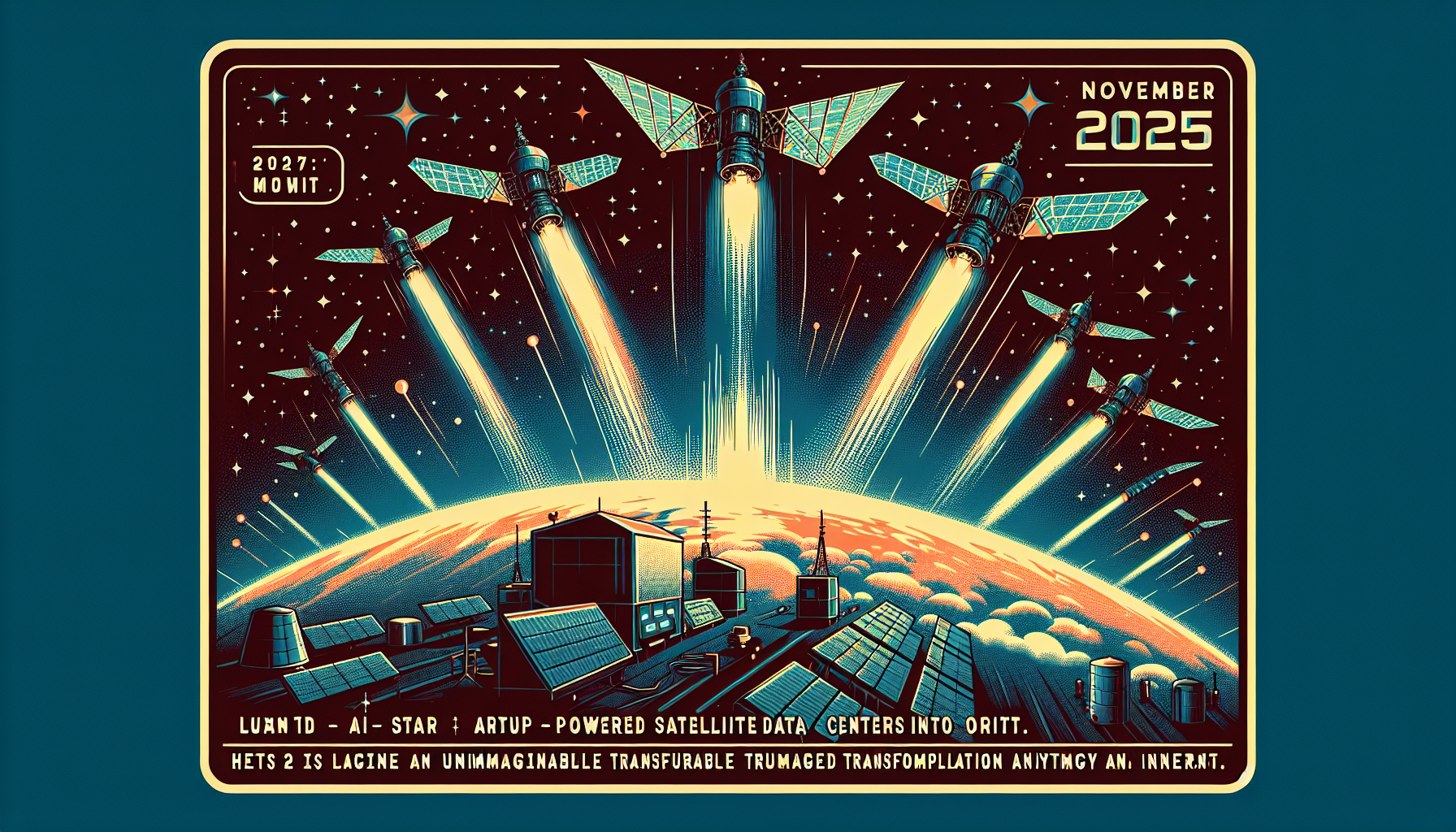Starcloud is quietly leading a once-unimaginable transformation in computing. In November 2025, the startup will launch the first AI-powered satellite data centers into orbit—an achievement that elevates human ingenuity and respect for the potential of technology.
These pioneering satellites, beginning with Starcloud-1, are part of NVIDIA’s Inception program and are the first to harness NVIDIA’s advanced H100 GPUs in space. Weighing about 60 kilograms (or roughly the size of a small refrigerator), Starcloud-1 is engineered to provide GPU computing power 100 times greater than anything seen in previous space-based systems.
A Vision Born in Space
Earth’s growing demand for artificial intelligence has strained ground-based data centers. Energy consumption, limited land, and the environmental cost of cooling have become pressing challenges. By moving AI computing to orbit, Starcloud is opening new doors—doors that have, until now, remained closed by our planet’s boundaries.
Endless Solar Energy
In space, Starcloud’s satellites receive unhindered sunlight. Their dedicated solar arrays collect this pure energy nearly all the time, free from the clouds and atmosphere that dim solar panels on Earth. This means near-unlimited, clean power at a fraction of terrestrial costs. Over the lifespan of each data center, energy expenses could be cut by up to 90%, even factoring in the cost of launch. Such energy independence directly addresses sustainability concerns and revolutionizes how we power our most demanding digital infrastructure.
Cooling with the Universe Itself
Ground-based data centers are forced to cool powerful GPUs with vast amounts of water and electricity. In contrast, Starcloud’s satellites are wrapped in the vacuum of space—a natural, limitless heat sink. By radiating heat directly into this vacuum, the satellites keep their GPUs at optimal performance without the environmental burden. This unique cooling method marks a profound shift toward responsible use of Earth’s critical natural resources.
Reducing Carbon Footprint
Because Starcloud’s satellites don’t rely on the Earth’s grid or constant water supply, their carbon emissions are dramatically lower. Beyond the once-off emissions from launch, the continuous operation of these orbital data centers could save up to ten times as much carbon dioxide as comparable ground-based centers. The potential for positive global impact is immense; each satellite embodies a commitment to cleaner, sustainable AI.
Shaping the Future of AI from Orbit
Starcloud’s technology allows high-performance AI workloads to run in space, removing the need for land, water, or traditional grid power. These advances also set the stage for a new commercial ecosystem. In partnership with Crusoe, an AI infrastructure company, Starcloud is preparing to launch Crusoe Cloud— the first public cloud platform in space. By as early as 2027, businesses could access powerful orbital computing resources, redefining what a data center can be.
Guided by World-Class Expertise
The vision behind Starcloud is realized by a multidisciplinary team led by CEO Philip Johnston. With backgrounds spanning aerospace engineering, renewable energy, and large-scale GPU computing, the team has the depth and skill needed to overcome space’s daunting challenges. Their collective ambition is not just to meet today’s AI needs, but to set a course for decades to come, creating infrastructure that keeps pace with relentless advances in machine intelligence.
A New Chapter for Data Centers
Starcloud’s upcoming launch is more than a technological innovation—it marks the arrival of a new era. For the first time, outer space will serve not just as a distant realm for satellites and telescopes, but as a crucible for AI computing that shapes progress here on Earth and, one day, perhaps far beyond.
With its debut of AI-powered, solar-sustained data centers in orbit, Starcloud is forging a pathway toward a future where sustainable energy, environmental stewardship, and computational might rise together, transcending the limits of our world.

Leave a Reply